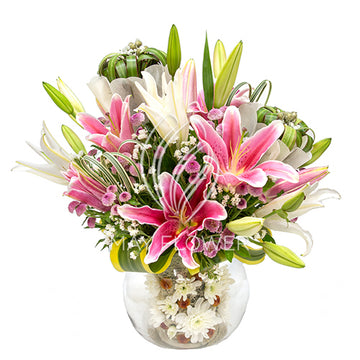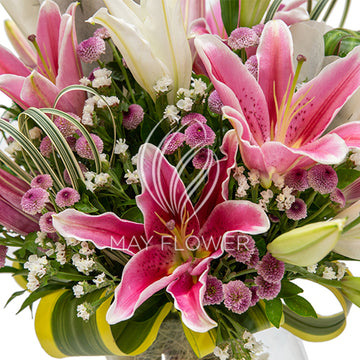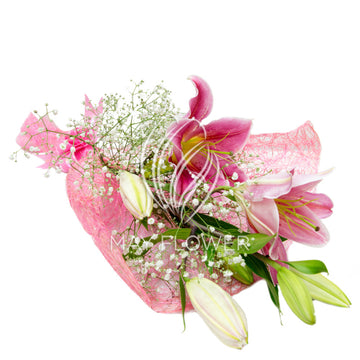Flowers you can Eat
The culinary use of flowers dates back thousands of years to the Chinese, Greek and Romans. Many cultures use flowers in their traditional cooking–think of squash blossoms in Italian food and rose petals in Indian food. Adding flowers to your food can be a nice way to add color, flavor, and a little whimsy. Some are spicy, and some herbaceous, while others are floral and fragrant. The range is pretty surprising.
It’s not uncommon to see flower petals used in salads, teas, and as garnish for desserts, but they inspire creative uses as well–roll spicy ones (like chive blossoms) into handmade pasta dough, incorporate floral ones into homemade ice cream, pickle flower buds (like nasturtium) to make ersatz capers, use them to make a floral simple syrup for use in lemonade or cocktails. (See a recipe for Dandelion Syrup here.) I once stuffed gladiolus following a recipe for stuffed squash blossoms–a little out-there, I know, but they were great. So many possibilities…
Eating Flowers Safely
So. As lovely as eating flowers can be, it can also be a little…deadly! Not to scare you off or anything. Follow these tips for eating flowers safely.
Eat flowers you know to be consumable–if you are uncertain, consult a reference book on edible flowers and plants.
Eat flowers you have grown yourself, or know to be safe for consumption. Flowers from the florist or nursery have probably been treated with pesticide or other chemicals.
Do not eat roadside flowers or those picked in public parks. Both may have been treated with pesticide or herbicide, and roadside flowers may be polluted by car exhaust
Eat just the petals, and remove pistils and stamens before eating.
If you suffer from allergies, introduce edible flowers gradually, as they may exacerbate allergies.
To keep flowers fresh, place them on moist paper towels and refrigerate in an airtight container. Some will last up to 10 days this way. Ice water can revitalize limp flowers.
Allium
All blossoms from the allium family (leeks, chives, garlic, garlic chives) are edible and flavorful! Flavors run the gamut from delicate leek to robust garlic. Every part of these plants is edible.
Angelica
Depending on the variety, flowers range from pale lavender-blue to deep rose and have a licorice-like flavor.
Anise Hyssop
Both flowers and leaves have a subtle anise or licorice flavor.
Arugula
Blossoms are small with dark centers and with a peppery flavor much like the leaves. They range in color from white to yellow with dark purple streaks.
Bachelor’s Button
Grassy in flavor, the petals are edible but avoid the bitter calyx.
Basil
Blossoms come in a variety of colors, from white to pink to lavender; flavor is similar to the leaves, but milder.
Bee Balm
The red flowers have a minty flavor.
Borage
Blossoms are a lovely blue hue and taste like cucumber!
Calendula / Marigold
A great flower for eating, calendula blossoms are peppery, tangy, and spicy–and their vibrant golden color adds dash to any dish.
Carnations / Dianthus
Petals are sweet, once trimmed away from the base. The blossoms taste like their sweet, perfumed aroma.
Chamomile
Small and daisylike, the flowers have a sweet flavor and are often used in tea. Ragweed sufferers may be allergic to chamomile.
Chervil
Delicate blossoms and flavor, which is anise-tinged.
Chicory
Mildly bitter earthiness of chicory is evident in the petals and buds, which can be pickled.
Chrysanthemum
A little bitter, mums come in a rainbow of colors and a range of flavors range from peppery to pungent. Use only the petals.
Cilantro
Like the leaves, people either love the blossoms or hate them. The flowers share the grassy flavor of the herb. Use them fresh as they lose their charm when heated.
Citrus (orange, lemon, lime, grapefruit, kumquat)
Citrus blossoms are sweet and highly-scented. Use frugally or they will over-perfume a dish.
Clover
Flowers are sweet with a hint of licorice.
Dill
Yellow dill flowers taste much like the herb’s leaves.
English Daisy
These aren’t the best-tasting petals–they are somewhat bitter, but they look great!
Fennel
Yellow fennel flowers are eye candy with a subtle licorice flavor, much like the herb itself.
Fuchsia
Tangy fuchsia flowers make a beautiful garnish.
Gladiolus
Who knew? Although gladioli are bland, they can be stuffed, or their petals removed for an interesting salad garnish.
Hibiscus
Famously used in hibiscus tea, the vibrant cranberry flavor is tart and can be used sparingly.
Hollyhock
Bland and vegetable in flavor, hollyhock blossoms make a showy, edible garnish.
Impatiens
Flowers don’t have much flavor–best as a pretty garnish or for candying.
Jasmine
These super-fragrant blooms are used in tea; you can also use them in sweet dishes, but
sparingly.
Johnny-Jump-Up
Adorable and delicious, the flowers have a subtle mint flavor great for salads, pastas, fruit dishes, and drinks.
Lavender
Sweet, spicy, and perfumed, the flowers are a great addition to both savory and sweet dishes.
Lemon Verbena
The diminutive off-white blossoms are redolent of lemon–and great for teas and desserts.
Lilac
The blooms are pungent, but the floral citrusy aroma translates to its flavor as well.
Mint
The flowers are–surprise!–minty. Their intensity varies among varieties.
Nasturtium
One of the most popular edible flowers, nasturtium blossoms are brilliantly colored with a sweet, floral flavor bursting with a spicy pepper finish. When the flowers go to seed, the seed pod is a marvel of sweet and spicy. You can stuff flowers, add leaves to salads, pickle buds like capers, and garnish to your heart’s content.
Oregano
The flowers are a pretty, subtle version of the leaf.
Pansy
The petals are somewhat nondescript, but if you eat the whole flower you get more taste.
Radish
Varying in color, radish flowers have a distinctive, peppery bite.
Rose
Remove the white, bitter base and the remaining petals have a strongly perfumed flavor perfect for floating in drinks or scattering across desserts, and for a variety of jams. All roses are edible, with flavor more pronounced in darker varieties.
Rosemary
Flowers taste like a milder version of the herb; nice used as a garnish on dishes that incorporate rosemary.
Sage
Blossoms have a subtle flavor similar to the leaves.
Squash and Pumpkin
Blossoms from both are wonderful vehicles for stuffing, each having a slight squash flavor. Remove stamens before using.
Sunflower
Petals can be eaten, the bud steamed like an artichoke.
Violets
Another famous edible flower, violets are floral, sweet, and beautiful as garnishes. Use the flowers in salads and to garnish desserts and drinks.
A compilation of these edible flowers was sought from Magazines and article clips found in print and over the internet.
I have not tried any of the edible flowers except a few such as Oregano, Basil, Jasmine and Chamomile. Do give me your reviews if you have tried any others and your experiences by replying to this blog post!
For more such articles visit: May Flower
























